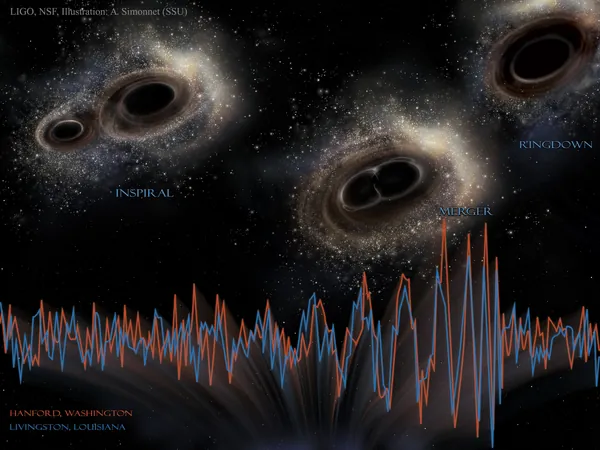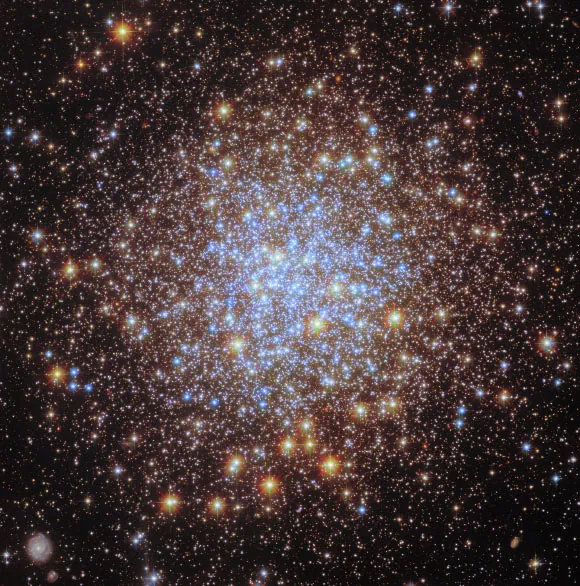
AI Revolutionizes Gravitational Wave Detection with Breakthrough Designs
2025-04-15
Author: Li
Unlocking the Secrets of the Cosmos
In the vast theater of the universe, cataclysmic events such as colliding black holes and stellar explosions stir the very fabric of spacetime, generating gravitational waves that could revolutionize our understanding of the cosmos. The monumental challenge? Crafting ultra-precise detectors capable of capturing these elusive ripples.
A Bold New Solution from Artificial Intelligence
Enter the researchers at the Max Planck Institute for the Science of Light (MPL), who have harnessed the power of artificial intelligence to navigate an unimaginable realm of potential designs, unveiling groundbreaking approaches to gravitational wave detection. Their pioneering findings were recently highlighted in the prestigious journal Physical Review X.
From Theoretical Predictions to Tangible Detection
Gravitational waves were only theoretically predicted by Einstein over a century ago, yet it wasn't until 2016 that humanity could directly detect them, thanks to the laborious work on detector technology.
Meet Urania: The AI Engine of Innovation
Leading the charge is Dr. Mario Krenn and his team at MPL, who collaborated with the renowned LIGO team – creators of the original detectors. Together, they developed a breakthrough AI algorithm named "Urania," designed specifically to innovate interferometric gravitational wave detectors.
Revolutionizing Detector Design with AI
Interferometry employs the fascinating principle of wave interference to achieve accurate measurements, yet optimizing these detectors presents a persistent challenge. By transforming this complex design task into a continuous optimization problem, the researchers utilized modern machine learning techniques, yielding a treasure trove of new experimental designs that surpass even the most advanced existing detectors.
Audacious Innovations Unearthed by Urania
Urania's solutions revealed not only familiar concepts but also bold, unconventional designs that could redefine detector technology as we know it. Dr. Krenn reflects, "After two years of experimentation and AI algorithm refinement, we uncovered dozens of new solutions that appear superior to human-engineered designs. It begs the question: what have we overlooked that a machine could see?"
A New Era: The Detector Zoo
In a fascinating twist, the researchers curated a public "Detector Zoo," showcasing 50 of the most promising designs for the scientific world to explore further. This initiative underscores AI's capacity for innovation, encouraging scientists to delve into uncharted territories in both experimental and theoretical frameworks.
AI: The Future of Cosmic Exploration
The groundbreaking work underscores a pivotal truth: AI doesn't just reveal novel detector designs—it fuels human curiosity and creativity in exploring the universe. Dr. Krenn aptly notes, "We are entering an age where machines can unveil superhuman solutions in science, and our role is to decipher their discoveries. This may well become a cornerstone of future scientific endeavors."


 Brasil (PT)
Brasil (PT)
 Canada (EN)
Canada (EN)
 Chile (ES)
Chile (ES)
 Česko (CS)
Česko (CS)
 대한민국 (KO)
대한민국 (KO)
 España (ES)
España (ES)
 France (FR)
France (FR)
 Hong Kong (EN)
Hong Kong (EN)
 Italia (IT)
Italia (IT)
 日本 (JA)
日本 (JA)
 Magyarország (HU)
Magyarország (HU)
 Norge (NO)
Norge (NO)
 Polska (PL)
Polska (PL)
 Schweiz (DE)
Schweiz (DE)
 Singapore (EN)
Singapore (EN)
 Sverige (SV)
Sverige (SV)
 Suomi (FI)
Suomi (FI)
 Türkiye (TR)
Türkiye (TR)
 الإمارات العربية المتحدة (AR)
الإمارات العربية المتحدة (AR)